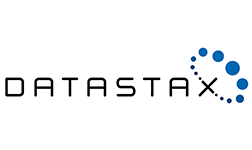
Datastax Launches Tech Support for Open Source Cassandra

DataStax today unveiled Luna, a new technical support plan aimed at users of open source Apache Cassandra. Executives with the company say the support plan will diversify DataStax’s revenue stream and tap into a new echelon of customers who were unlikely to pay for a premium version of Cassandra.
You likely know DataStax as the company behind Apache Cassandra, the ultra-scalable NoSQL store serving data for many of your favorite applications, such as Netflix’s video-streaming service, Facebook’s search inbox, or the Church of Latter Day Saint’s genealogy database. The company employs many (if not most) of the world’s Apache Cassandra committers, and can rightfully claim to be the world’s foremost authority on all things Cassandra.
But unlike other commercial ventures operating in the open source space, DataStax has not sold a pure support offering for its chosen area of expertise. If you wanted to get involved with DataStax and tap its Cassandra expertise, you needed to buy a license to DataStax Enterprise, its souped-up version of Cassandra, or use its recently announced DataStax Distribution of Apache Cassandra (which is available with support).
That product and services mix changes with today’s launch of DataStax Luna, the company’s first support offering for Apache Cassandra. Manikandan Srinivasan, a product manager at DataStax, explains Luna’s significance.
“What we’re doing with Luna is responding to a demand for Cassandra support in the market,” Srinivasan says. “We introduced a DataStax distribution of Apache Cassandra a few months ago. And this is the next step in evolving that closeness to the Apache community. With Luna we’ll support any version of Apache Cassandra that you’re running.”
There are two segments of the marketplace, according to DataStax co-founder and CTO Jonathan Ellis: one that will buy a premium enterprise product, and one that will stay with the open source version. Luna is targeted at the latter.

How Cassandra stores customer data in a wide row (Courtesy of DataStax white paper “Apache Cassandra Architecture”)
“There’s a segment of the market where they look at DataStax Enterprise and say, ‘You know, we’d rather stay as close as possible to the community-driven code base,’” Ellis tells Datanami. “So DataStax is responding and saying, yeah we’ll support you there. But if you want the extra security and extra performance and extra tooling that you get with DataStax Enterprise, then of course we’re making that available as well.”
DataStax is selling two tech support offerings with Luna. The first “8/5” offering provides technical support for eight hours a day, and five days a week and ranges in cost from $45 to $75 per Cassandra node per month. The second “24/7” offering provides support 24 hours a day, seven days a week, and ranges in cost from $50 to $95 per Cassandra node per month.
DataStax is looking for the Luna support offering to become one of three main revenue-generators for the company. The first, of course, is DataStax Enterprise, which is used by hundreds of companies. The second is Apollo, a managed-service offering unveiled in May that is currently in beta on the AWS and GCP clouds. Luna now becomes the third revenue generator.
It’s all about serving Cassandra users wherever they happen to be on their Cassandra, says Srinivasan, who was one of the driving forces at DataStax behind Luna.
“What we’re trying to do as a company is provide a spectrum of offerings they can pick and chose from. Depending on the maturity of the customers and their needs, they can pick up one of the three offering,” he says. “We want to become the single vendor to serve all the use cases and deployments, irrespective of what the customer needs are.”
DataStax is under pressure from Amazon Web Services, which launched its Managed Cassandra Service (MCS) earlier this month. The executives at DataStax say the launch of MCS ratifies their belief that Apache Cassandra, which emerged from Facebook over a decade ago, is still the go-to database when maximum scale and availability are required.
With Luna now available and the Apollo managed service set to launch in 2020, the time is right for DataStax to diversify its offerings, Ellis says.
“As a venture-backed company, our motivation is to position as a product company, not a support company,” he says. “I think in 2019, we’re at a point where DataStax Enterprise is mature enough and the value proposition is clear enough that we can go ahead and add that pure support offering without diluting the DSE brand and the DSE position.”
Related Items:
AWS Launches Cassandra Service
When – and When Not – to Use Open Source Apache Cassandra, Kafka, Spark and Elasticsearch
DataStax Unveils Constellation, Its Cassandra Cloud Platform


























